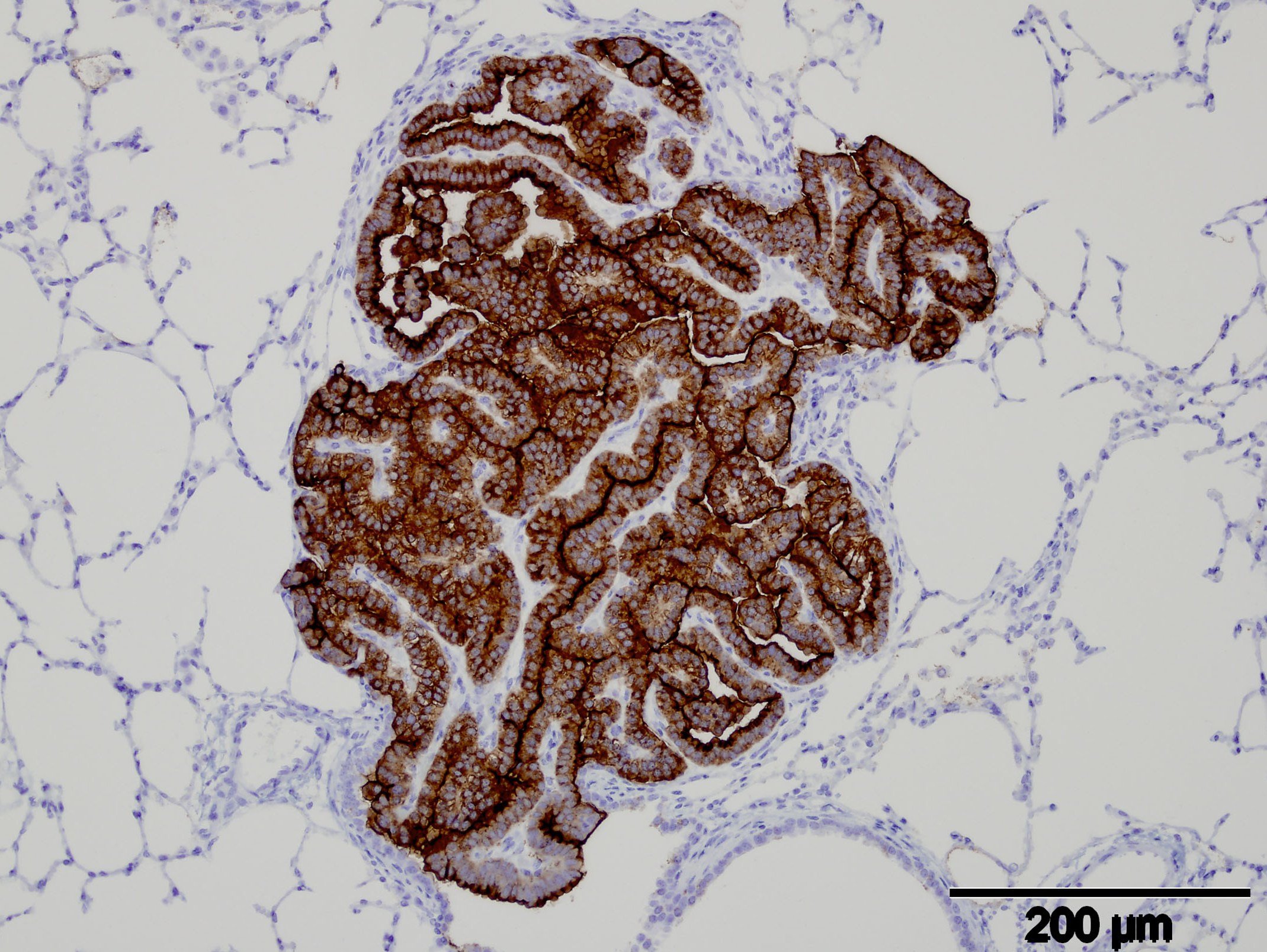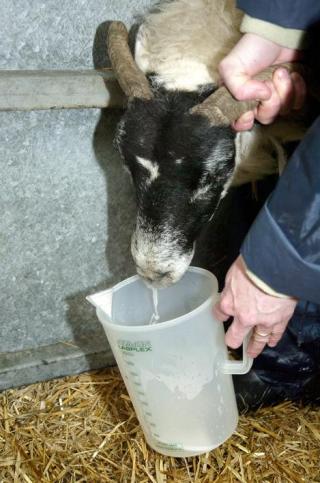Controlling Lung Cancer In Sheep
Published on 19 February 2010 in Sustainability and Communities
, Food, health and wellbeing
Introduction
Ovine pulmonary adenocarcinoma (OPA, also known as jaagsiekte) is a common infectious lung disease of sheep caused by jaagsiekte sheep retrovirus (JSRV). JSRV induces lung cancer in infected animals and the clinical signs are of a progressive respiratory disease that resembles pneumonia. A feature unique to OPA is the over production of fluid in the lungs, which may be apparent as a watery discharge from the nose. The disease is always fatal once these clinical signs appear.
OPA is endemic in Scotland and affected farms may initially suffer annual losses as high as 10-20% of the flock although this reduces to 1-5% once the disease becomes established. Unfortunately, the true impact of the disease is unknown because a commercial screening test for OPA is not yet available and a positive diagnosis of individual animals relies on the clinical signs of disease and post-mortem examination of the lungs.
There is a long incubation period between infection with JSRV and the appearance of clinical disease and this presents a problem for controlling OPA. The majority of cases appear in adult sheep of 2-4 years old but many infected animals do not develop any outward signs of the disease even though they may harbour tumours within their lungs. These animals shed infectious virus and as a result, OPA may be spread to new farms and new areas by the purchase of stock that is infected but apparently healthy.
Currently, the only strategy for limiting the spread of OPA is to remove animals suspected of having respiratory signs from the flock. Motherless rearing of lambs may be effective in removing the disease from affected flocks but is not practical for the majority of farms. Improved methods for controlling the disease are therefore urgently needed.
Key Points
- OPA is an important endemic viral disease of sheep. A recent survey of the prevalence of OPA found that 38% of the flocks in Scotland tested were positive for JSRV (the virus that causes OPA).
- Moredun scientists are at the forefront of international research efforts to develop tools for controlling OPA and have been successful in developing a blood test which can identify flocks containing sheep infected with JRSV.
- More research is needed to improve the methods for diagnosing this disease at an early stage of infection and for understanding the mechanism of pathogenesis. Protection by vaccination is a long-term goal but currently animal management methods offer the best approach for control.
- In addition to its agricultural importance, OPA is regarded as a comparative model for some forms of human lung cancer. Understanding the mechanisms underlying tumour induction in OPA has relevance for human lung cancer, which remains a significant health problem in Scotland.
Research Undertaken
Research into developing new control strategies for OPA has targeted several areas, including development of vaccines and diagnostics and epidemiological studies. This research is particularly challenging as sheep do not mount an immune response to JSRV - the virus that causes OPA. The absence of antibodies to JSRV in infected sheep means that blood tests that are usually employed to diagnose infectious diseases are not available for OPA.
Moredun scientists have been successful in developing a test (“PCR test”) that can detect the presence of JSRV itself in the blood of infected sheep before the clinical signs of disease are apparent. This test can identify infection at the flock level and could potentially be used in establishing a flock accreditation scheme for JSRV in the future.

The availability of the PCR blood test has made it possible for a national survey of the prevalence of JSRV infection in Scotland to be undertaken. In this survey, carried out by scientists at Moredun Research Institute, Scottish Agricultural College and Bioinformatics and Statistics Scotland, 125 randomly selected farms were recruited and blood samples from 27 sheep from each flock were tested for JSRV. Participating farmers also completed a questionnaire on farm management practices and animal health history of the flock.
The observed prevalence of JSRV on the farms tested was 38%. However, the observed proportion of individual sheep testing positive was relatively low (3.6%), and in many positive flocks, only one of the 27 sheep tested was positive. A further interesting finding was that relatively few farmers (12%) reported experience with OPA in their flocks, despite the apparently high prevalence of JSRV on Scottish farms. This indicates that JSRV infection is widespread in Scotland but is silent in many flocks, presenting a high risk for the spread of the disease into new flocks by apparently healthy animals.
Unfortunately, due to the low level of JSRV in the blood, the PCR test used in the survey is not yet suitable for diagnosing infection in individual animals and additional research is needed to develop diagnostic tools with greater sensitivity. An improved test would allow farmers to confirm the JSRV status of sheep prior to purchase and would support the evaluation of test and cull strategies to clear the disease from infected flocks.
Policy Implications
Improved control of endemic diseases such as OPA will benefit animal welfare and the economic sustainability of Scottish sheep farming and associated industries. This contributes to an inviting rural landscape with benefits for rural communities and tourism.
A reduction in losses due to endemic diseases such as OPA will help to decrease the environmental impact of livestock farming and increase food security for Scotland. In addition to its agricultural importance, OPA is regarded as a comparative model for some forms of human lung cancer. Understanding the mechanisms underlying tumour induction in OPA has relevance for human lung cancer, which remains a significant health problem in Scotland.
Author
Dr David Griffiths david.griffiths@moredun.ac.uk
Topics
Sustainability and Communities
, Food, health and wellbeing
Comments or Questions







